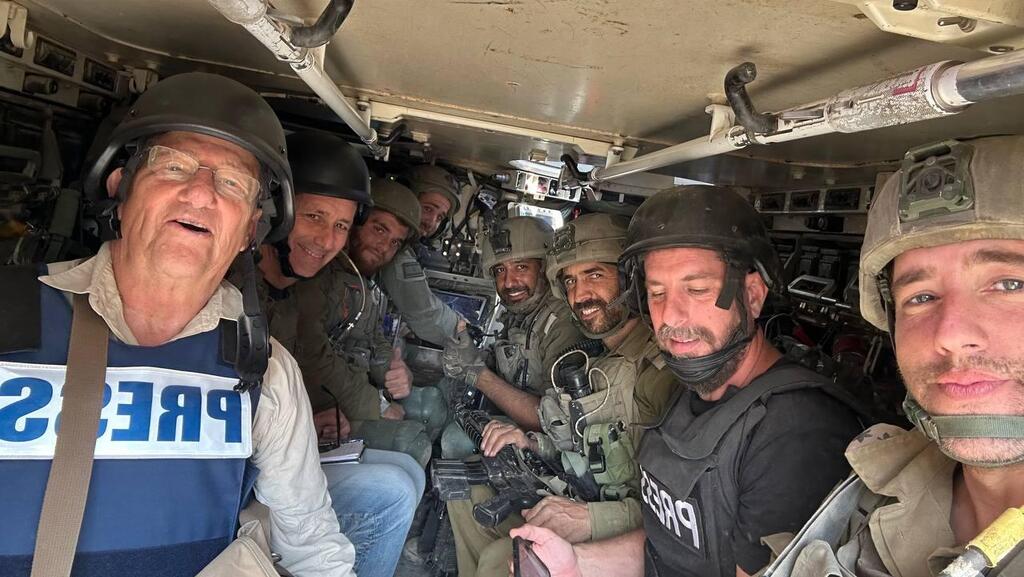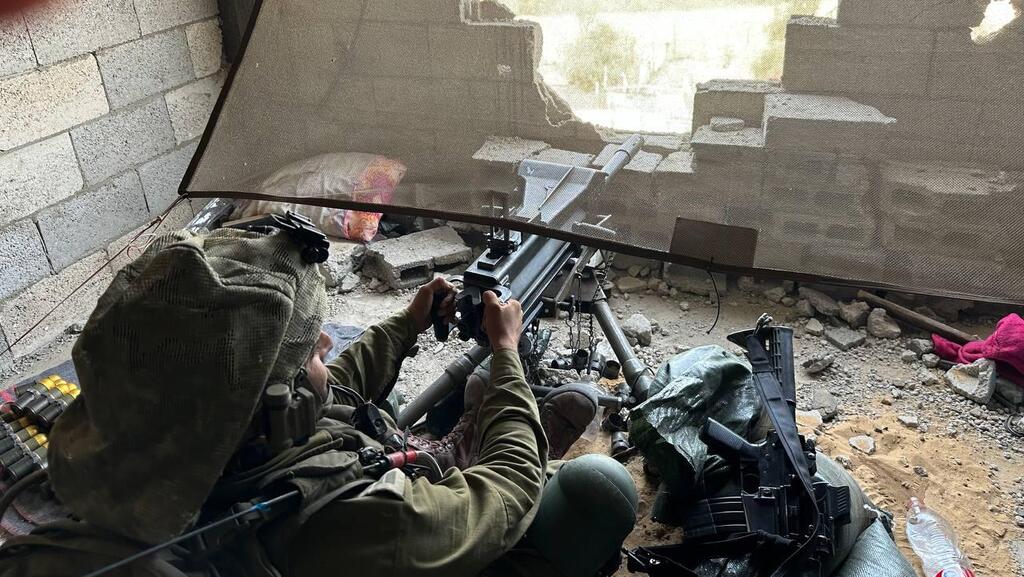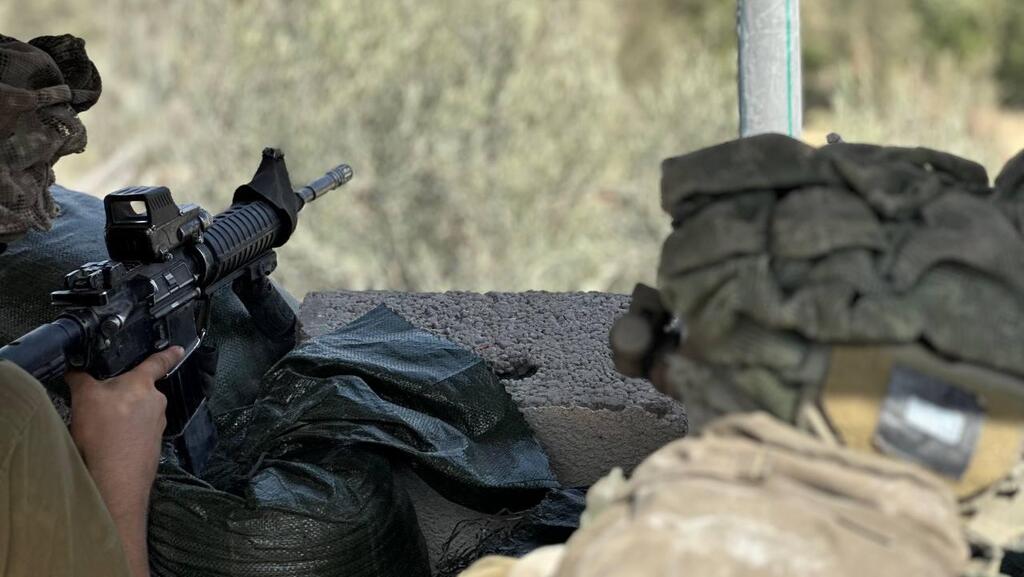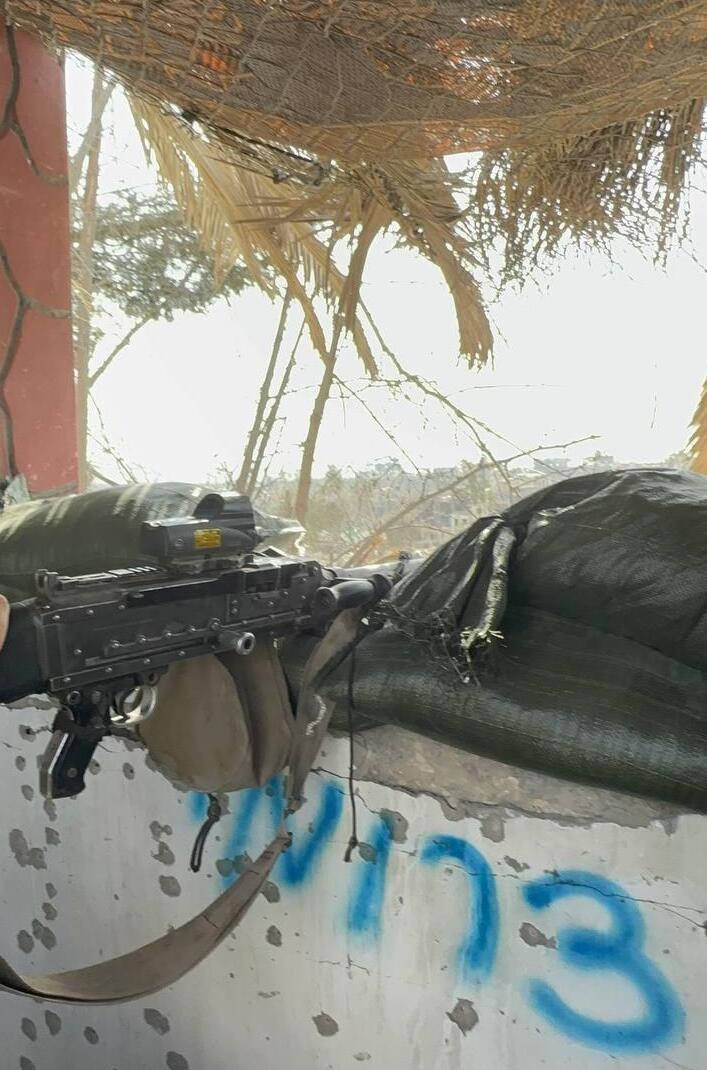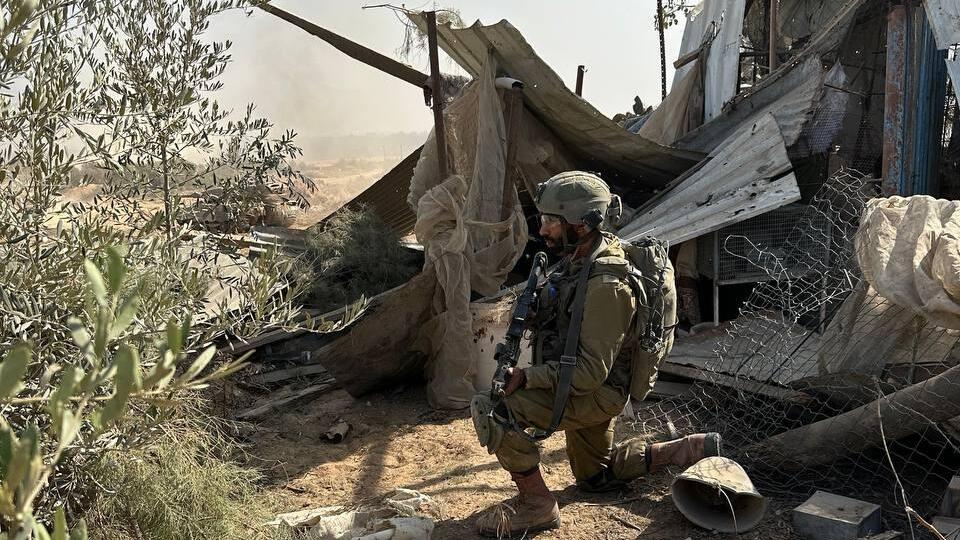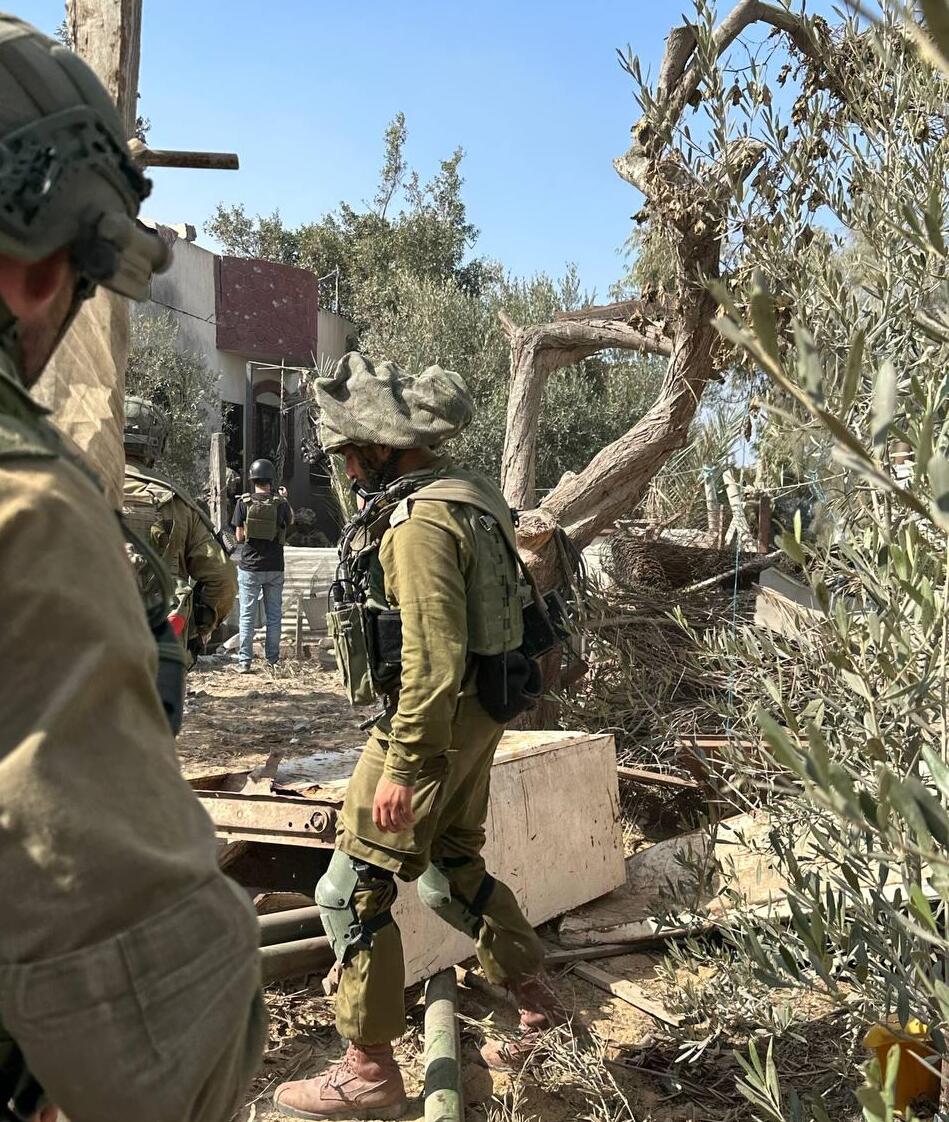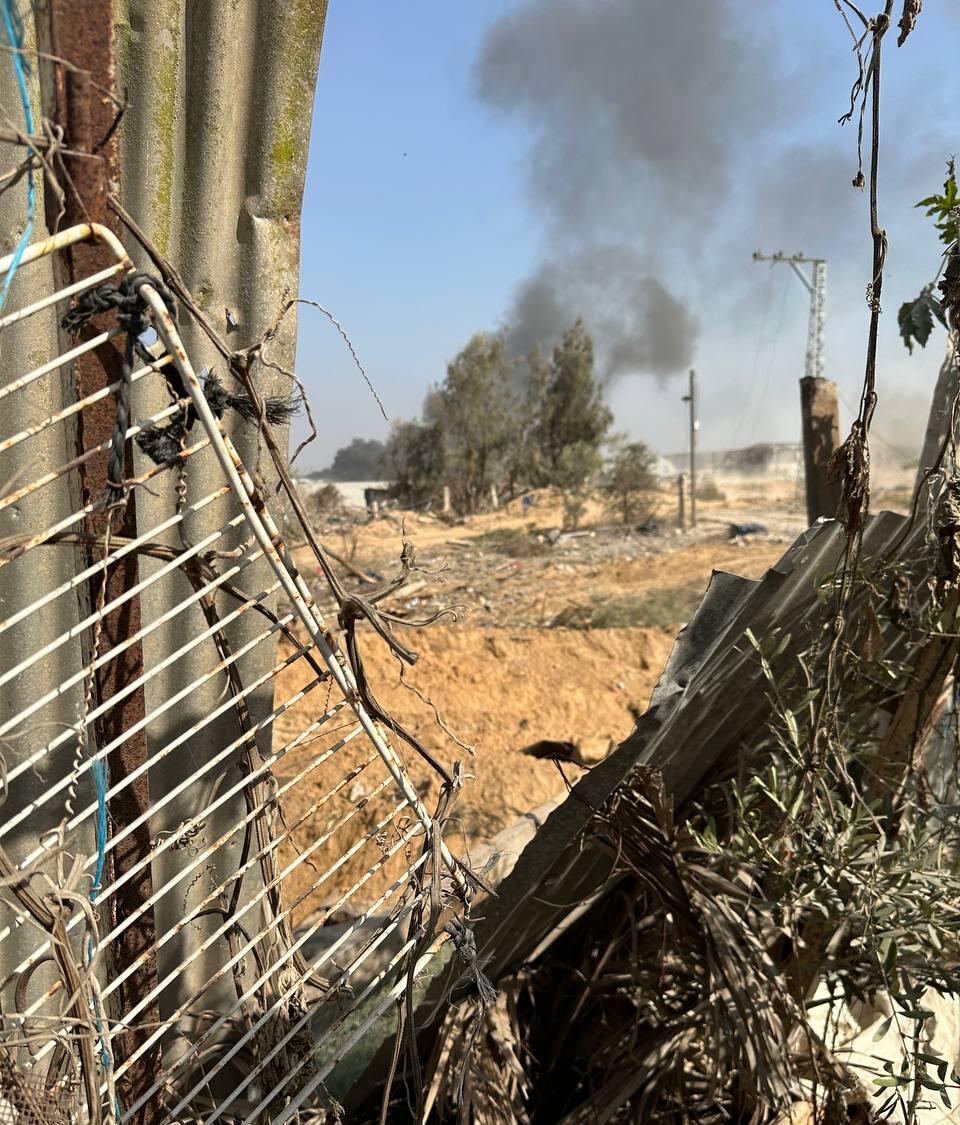IDF Forces operate in the Gaza Strip on November 5, 2023
(Video: IDF Spokesperson's Unit)
Charred skeletons of civilian cars and crushed motorcycles lie on both sides of the road leading to the Gaza border.
"These are the cars that the scoundrels looted in the kibbutzim and tried to drive to the border with," explains Lt. Col. Pavel, the logistics officer. "The helicopter gunships and the UAVs hit them when they tried to escape back to Gaza. The motorcycles of the terrorists you see here were run over by our tanks on that terrible Saturday."
More stories:
Friday at noon we drive through the desolate fields and orchards of the kibbutzim where there remains not one living soul. Every now and then we pass a staging area of a battalion of tanks or D9 bulldozers waiting their turn to enter Gaza. The head of the force to which the IDF spokesman attached us has already arrived at the Gaza seashore near Al-Azhar University, where the soldiers of the infantry brigade are located. The rest of the force is deployed in the area between the Gaza border and the southeastern neighborhoods of Gaza City.
What will prevent the terrorists from escaping through the tunnels that pass under the area you are in toward the southern Gaza Strip, to the al-Burj camp for example, I ask brigadier Israel Friedler before we board the Namer APC that will lead us inside. "Don't worry," he smiles. "We don't let them escape south above the ground, and the Air Force has already made sure they can't escape south from the Gaza River below the ground."
Col. Israel Friedler, a father of six, is the commander of a brigade that was made up of trainees from various courses. Under his command are also battalions and companies of paratroopers and engineering and tanks of the Armored Brigade, and together they form a brigade combat team that is deployed over a large area to the east and south of Gaza City and is now clearing it.
Friedler has 12 brothers, seven of whom, in addition to him, are currently serving in reserve duty fight in the IDF. We sit in the Namer and fasten our seatbelts. "If we go over an explosive, don't let your head hit the ceiling," he warns.
The APC is built to absorb the payload and the green lights that are flashing indicate that the "wind jacket" system is working and ready to intercept anti-tank missiles or RPG rockets that will be fired at us. The ride is relatively comfortable on a dirt road that we see from the cameras around us. The shelves are closed so that we don't get a mortar shell inside.
The IDF's entry into the Gaza Strip this time was done using methods and tools that give maximum protection to the soldiers. We do not now hear the Air Force operating in the vicinity and, in fact, in all the hours we were inside the Gaza Strip we did not see a single attack from above.
The reason seems to be the visit of US Secretary of State Anthony Blinken, who at the exact same time was sitting in Tel Aviv watching the horror films that the terrorists took when they carried out the October 7 massacre. The IDF probably did not want to take the risk of a disaster accidentally happening while he was here, which would further erode the legitimacy that the IDF has to act. But the mortars and cannons around us are constantly thundering.
We hadn't crossed the Gaza border yet and the Namer stopped with the screeching of chains. The commander of one of the forward forces to which we are traveling informs Col.Friedler that he notices two armed men lurking on the side of the road where we are about to travel. He instructs the driver to continue moving toward the small settlement on the ridge of hills that overlooks Tancher Road, also known as Salah al-Din road, a main thoroughfare which runs through the Strip from north to south along its entire length. This settlement was a Hamas stronghold and part of the organization's first line of defense against a possible Israeli invasion. The terrorists also went out to attack the Nahal Oz and Be'eri kibbutzim.
The shock of the first encounter
A small climb and we are on the outskirts of the village. The back door of the Namer opens and we run out. From time to time, bursts of small arms fire are heard all around and a succession of mortar bombs exploding from the row of houses opposite us. "This is ours," Friedler tells me as we stand on the roof of a building that remains more or less intact. At a distance of about four kilometers, you can see Tancher Road and Al-Azhar University. Around us are the ruins of the Hamas stronghold. The Air Force left no stone unturned even before the force entered. Among them is a huge D9 bulldozer that exposes shafts of Hamas combat tunnels. Then a special force of engineering troops will take care of them.
"Most of the soldiers here have not experienced a war of such intensity," Friedler explains. "We came in very strong, aggressive and accurate. There was resistance from them and we had casualties, but we hold the territory very tightly. They are more active during the day. At night they are afraid and hide because they understand that the IDF knows how to fight in the dark. Now they are trying to tail us from behind from tunnels or buildings. Their main threat to us is anti-tank guns, missiles and RPGs and sniping."
8 View gallery
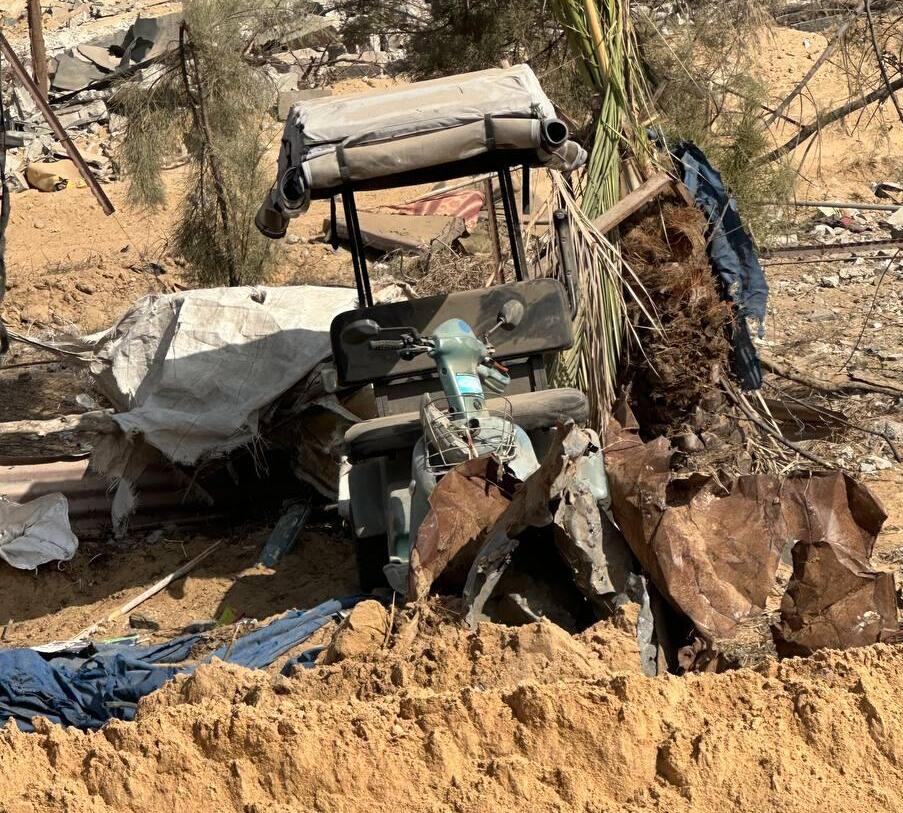

Hamas terrorists likely used this Israeli conveyance to kidnap its elderly owner into Gaza
(Photo: Ron Ben Yishai)
Around us, the half-destroyed building is buzzing with activity. On the top floor was a Hamas Kornet anti-tank missile position and now two paratroopers are lying there behind an MCL grenade launcher. "Let's see something," Maj. Gen. C says to me, his lips twitching in disgust. In a pile of trash in the yard below, is a scooter that was robbed from Kibbutz Be'eri and moved here, probably carrying one of the kidnapped senior citizens.
When you are in this place, in the middle between Gaza City and the surrounding kibbutzim, you understand the malicious planning. Those who left here did not go to confront the IDF soldiers, but to abuse civilians and kill them, and also knew that they had somewhere to return to. They left the scooter behind, as I understand it, and entered the tunnels through which they fled to Gaza City and its surroundings, where they are now under siege. I am a journalist and it is necessary to report facts, as far as possible detached from my feelings, but I find myself furiously writing in a notebook: "Until a week ago, the mothers, wives, children and parents of sadistic murderers lived here."
Birds of prey circle above us. In this area these days there is a lot for them to chew on. The firing of the cannons and mortars does not frighten them; it is obvious that they have gotten used to it.
The Israeli flag on the roof
Clouds of dust swirl around the small hill on which the village stands and, nearby, black smoke rises from a factory that the terrorists barricaded themselves in and set on fire before leaving. From the nearby wadi rises the roar of the tank engines, one of which first eliminated the terrorist squad that ambushed us. Lots of forces are working in close proximity and this is dangerous.
"We do not shoot even if we identify armed men we suspect as terrorists if it is not within our combat space," says Friedler. "There are clear boundaries between the forces - who shoots and especially when not to shoot. Our fear of firing on our forces is greater than the fear of a terrorist firing on these tools."
In a position behind a Negev machine gun stands Yonatan, a paratrooper from Moshav Tamar in the Jezreel Valley. "We didn't come across them much because most of them ran away when we arrived, but we will settle the score with them," he says of the Gazan terrorists. Everyone here - commanders and soldiers alike - speaks with a pathos that I don't recall in any war I've covered.
"When the soldiers talk to each other, they say that the light should overcome the darkness, that this cruel enemy should be wiped out of the world," Maj. Gen. R. tells me. "When we entered here, we had the feeling that we were building a much better world." At first it bothered me, but later I heard his soldiers talking exactly like him.
They told me that on Black Saturday, Maj. Gen. R ran with his men to fight in Kibbutz Kissufim, and there, after rescuing a hostage and killing several terrorists, he injured his back, sought medical treatment and a few days later returned to command his battalion in the brigade. When we are behind the safe shelter of a concrete wall that hides us from possible snipers, he tells me: "While fighting I had a son and I made the brit over the red phone. I blessed him with the blessings that the father confers properly and we continued to fight."
The task of the brigade is to clear the area of terrorists in preparation for the next phase, in which the military infrastructure of Hamas in the area will be dealt with - above ground and especially below it. Friedler still does not know what his role will be if and when the IDF further tightens the cordon around the center of Gaza City. He is focused on the here and now.
"We need to locate the enemy and kill him, protect ourselves, find tunnels and intelligence so that we can win clearly and without dilemmas," he tells me while hanging the Israeli flag on the roof of the house. "The main threats to us are sniping, anti-tank missiles and enemy raids. While carrying out the mission, you have to make sure that the soldiers look after themselves. I always remind them: first we meet the task, and then we take care of ourselves. We came to win, and as much as possible to return home safely."
The test is still ahead
A warning is coming. There are signs that terrorists intend to raid a house where IDF forces are stationed a few hundred meters away from us. Maj. Gen. R orders mortar fire toward the area where the terrorists are believed to be preparing. All the forces in the area are mobilized, but downstairs the paratroopers who are not on duty are preparing lunch and talking about the speech that Hassan Nasrallah is supposed to give in about an hour and a half.
"This rascal won't do anything," David, a fighter sitting in the corner of the room, tells me knowingly. "As you can see, our morale is high and we will do whatever it takes. As long as they give us the order." From his mouth, for some reason, it doesn't sound like a cliché that the IDF spokesman planted in his mouth. His enthusiasm and motivation was contagious, but as we shake in the Namer on the way back to Israeli territory, I can't avoid the thought that the main event is still ahead of us.
The big test for the IDF forces will be when Hamas recovers from the shock, identifies the soldiers and then it will have more time to attack them. The phase of remaining stationary in the field after the battle for victory is always the most dangerous and everything must be done to maintain the security of the forces. I came back with the feeling that the commanders and the fighters are aware of this.





